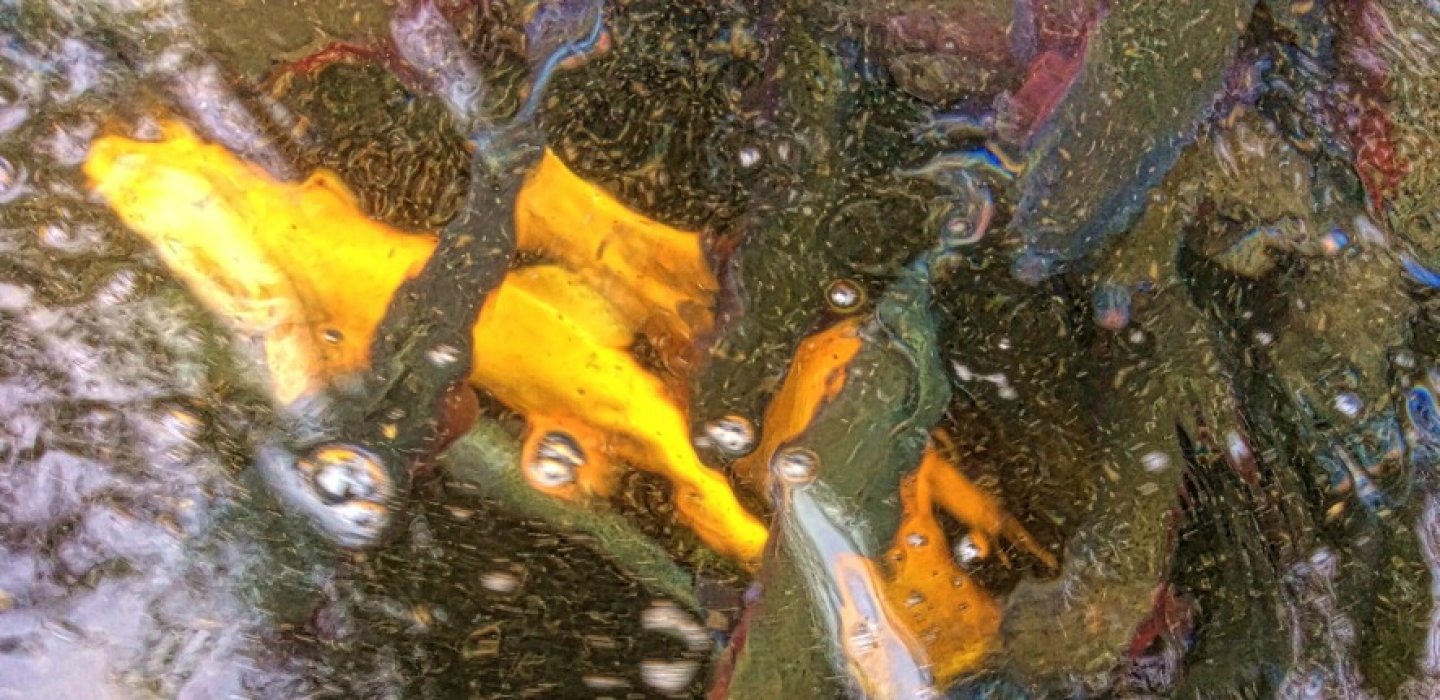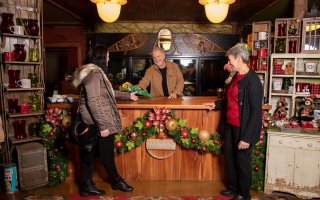
Avid anglers might want to visit the Chateaugay Fish Hatchery. You cannot catch any of the fish there, but you can learn all about how Adirondack fish are studied, nurtured, bred, and stocked. This is all to keep both the environment, and the people who like to fish in that environment, happy.
This is a more daunting task than it looks. In nature, water sources can shift, local wildlife can proliferate or die off, and a promising pond suddenly becomes a challenge to survive in. The dedicated people at the Chateaugay Fish Hatchery don't want that to happen. It's really interesting to observe how they go about supporting the fish population in so many lakes, ponds, and rivers.
Who knows? You might be meeting these fish some day.
lots of baby fish
I slipped in briefly for a quick tour, because this is their busiest season. Late winter and early spring is when they prepare the fish for their journey to the water body they are destined to land in. They have been managing fish stocks in the Adirondacks back to the 1930s, and more informally, for even longer than that.
All through summer is a fine time to visit. The pace is slower, and the personnel have more time to explore all the different aspects of fish management. It is also a popular place for school groups. Every third grade in the area has visited the Chateaugay Fish Hatchery.

Trout are cold water fish. As the hatchery director explained to me, the Salmon River dividing line for release is the area south of Fort Coventry and north of Westville. This is the line between cool water and warm water -- in baby fish terms.
These big outside tanks are where the baby fish acclimate to their natural environment. Before that, they are "babied" indoors under climate controlled conditions.

Just the day before, they had released four hundred rainbow trout into the Saranac River, and were making plans to continue in other places where the snow has mostly melted. Putting in the baby trout, known as "fingerlings," is a somewhat delicate process. Doing it before the melt would mean higher waters washing them out of the best places they had been put.
There is every effort to maximize the fingerling survival rate. In some remote places, it would be difficult to get the fish there without creating more stress than they are avoiding. Where it is practical and terrain permits, they are moving into boat release instead of helicopter drops.
It's a delicate balance.

To get an idea of just how many ways local rivers have shaped this area, see our blog post, Enjoying the River Country.
what kind? every kind!
This fish hatchery is the most diverse operation of its kind. When I asked how many different species, I was told, "All of them." They stock an incredible number of Adirondack ponds, lakes, and rivers, along with keeping track of how the fish are doing in all these different environments.
Brook trout are native to New York waters, but their numbers have dwindled with acid rain, habitat destruction, and competition with other fish species. One of the duties of the fish hatchery is to figure out how hybridized fish can help keep the Adirondack fishing traditions alive. If they can't control environmental change, they can help the fish change to survive it.

The Temiscamie hybrid is a cross between a domestic brook trout and a wild Temiscamie (Canadian-strain) brook trout. A splake is a hybrid cross between a lake trout and a brook trout, and can be found in 14 different lakes. These hybrids can handle more acidic waters, which lets them reproduce more easily, and grow much larger, than brook trout.
To illustrate, the New York state record for splake, at 13.8 pounds, is more than twice the record for a brook trout, which is 6 pounds even. The moral of the story? If there are splake in that lake, be ready for a challenge.

The outdoor tanks have a number of amenities for the fish, who are living in the equivalent of a high density "fish city." These tanks don't have nearly the surface area of even a small pond, which is where the vital process of oxygenation takes place. Fish have to breathe oxygen, too. It's just dissolved into the water.
So nature alone cannot handle the requirements in this unusual environment. There is a source of fresh water cascading at one end, and another pipe in the middle, both of them increasing the surface area of the water, to let the water absorb more oxygen.

The trout are also fed on demand. Those yellow buckets suspended over the tanks are self-feeders. The trout will swim into the wire that extends into the water to release food pellets.
It could seem like the fish are not learning anything in this environment, but they don't really have to. For one thing, fish are mostly about their instincts. This isn't a case like a complex mammal who needs to learn things to survive. Fish aren't taught anything by their parents in the first place.
really local trout
These fish will be released into the wild at a young age, when little is expected of them. Of course, they quickly follow their instincts and learn their new environment, and trout can be wily. Lake trout can live twenty or even up to thirty years. They will have picked up some tricks during those decades, as anglers know and expect.
Right on the grounds are some display ponds, occupied by more senior trout.

I was impressed with the size of these trout. But of course, they lead a life of fish leisure, without natural predators or jousting with anglers.
They are probably not very bright, even for fish.

In another display pond, there are some rare albino trout. The director said they were 16 to 18 years old, and probably near the end of their lifespan.
They couldn't release them into the wild: they are so noticeable they would make easy prey. An eagle or osprey would see them from very high up.

So, they live here. Just chilling.
The Deer River area is only 20 minutes from downtown Malone, but is a real Adirondack experience nonetheless. Have a wonderful time fishing, everyone!
Pick a place to stay. Find a place to dine. And explore all of our fishing.






Comments
Add new comment